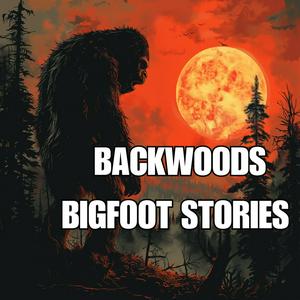BWBS Ep:128 The Ancient Watchers of Appalachia
In the shadow of the ancient Appalachian Mountains, where morning mist clings to valleys older than memory, something walks on two legs that shouldn't exist. Tonight's bone-chilling episode takes you deep into the heart of America's most enduring mystery, beginning with a terrifying encounter from 1879 when the Henderson family of Craig County, Virginia came face to face with an eight-foot-tall nightmare peering through their kitchen window.This was no bear, no trick of the light, but something with eyes that held an intelligence both ancient and terrible. We journey back through centuries of horror, starting with the Cherokee people who knew these mountains harbored Tsul'Kalu, the slant-eyed giant with seven fingers on each massive hand. Their legends speak not of a simple beast but of a being with disturbing intelligence, one that could take human brides and transform into the horrifying Raven Mocker, capable of stealing hearts from living victims without leaving a single mark. These weren't campfire stories but warnings passed down with the deadly seriousness of survival knowledge, including the haunting tale of a Cherokee woman whose mysterious suitor turned out to be something that had to fold itself to fit inside her dwelling, its head scraping the rafters while its feet touched the opposite wall. As European settlers pushed into the wilderness, they encountered their own nightmares. We reveal the suppressed military records from the Civil War, when both Union and Confederate soldiers witnessed a massive figure walking among the battlefield dead at Droop Mountain, tenderly checking bodies and carrying wounded soldiers to safety with inhuman strength. The lumber camps of the late 1800s became theaters of terror, particularly the 1909 incident at Spruce Knob where something systematically destroyed an entire logging operation with its bare hands, tearing apart steam engines and leaving a message written in twisted metal and shattered wood that couldn't be clearer: leave these mountains or die.The modern era brought no relief from the terror. In 1959, a one-room schoolhouse in Buchanan County became a prison of fear when something tried every door and window while eight children and their teacher huddled in terror, watching massive fingers with yellowed nails reach through a partially open window. The creature's face appeared at each window in turn, ancient and terrible, with glowing yellow eyes that showed an intelligence that made its interest in the children all the more horrifying.The creation of the Appalachian Trail opened a new chapter of encounters, with experienced hikers and military veterans reduced to cowering in their tents as something massive circled their camps, attempting to speak in sounds that almost formed words, as if desperately trying to communicate across an impossible divide. The 1976 case of former Marine David Carpenter, who abandoned his thru-hike after something rehung his food bag fifteen feet higher than humanly possible, demonstrates that even hardened soldiers found themselves outmatched by whatever walks these ridges.We explore the modern explosion of sightings, including the 2006 Hungry Mother State Park incidents witnessed by multiple families, where a creature showed particular interest in tents containing children, approaching with a curiosity that parents found more terrifying than any aggression. The narrative reaches into the digital age with thermal drone footage from 2023 showing multiple bipedal heat signatures moving through the forest canopy, communicating with each other using vocalizations that linguistic experts claim show patterns consistent with language structure.Throughout this journey into darkness, we hear from the witnesses themselves, from nineteenth-century German settlers who watched in horror as something lifted entire roof structures off cabins, to modern researchers like Jeff Carpenter who looked into the eyes of these creatures and saw an intelligence that challenged everything he thought he knew about the natural world. The West Virginia Bigfoot Museum's collection of over three hundred footprint casts shows anatomical features that experts say would be nearly impossible to fake consistently across decades of hoaxes. But perhaps most chilling are the habituation sites, where property owners claim to have established ongoing contact with these entities, revealing not mere animals but beings with family structures, moral codes, and a culture that predates human presence in these mountains. One retired biology professor's five-year study suggests these creatures possess an intelligence that may equal or exceed our own, watching us from the forest edge with patience that spans generations. As we reach our terrifying conclusion, we're left with the understanding that every night in the six-hundred-thousand square miles of Appalachia, someone experiences something that will haunt them forever. The mountains themselves seem complicit in hiding these creatures, keeping secrets in their shadowed valleys and mist-shrouded peaks.The Cherokee elders remind us that Tsul'Kalu never left; we simply stopped seeing him, existing as he does in the space between the physical and spirit worlds, appearing when he chooses to remind us that we are not the only intelligence walking these ancient paths.When you hear something outside your window tonight, when your dog refuses to go outside, when you glimpse movement in the forest that doesn't match any known animal, remember that in the darkest corners of Appalachia, the monsters are real, they are intelligent, and they are closer than you think.Sleep well, if you can, knowing that somewhere in those blue-ridged mountains tonight, ancient eyes are watching from the treeline, massive footprints are being pressed into the soft earth, and the thin veil between legend and reality grows thinner with each passing hour. The mountains remember what we choose to forget, and in that remembering, the terror endures, waiting for the moment when humanity is finally ready to accept that we were never alone in these hills.


